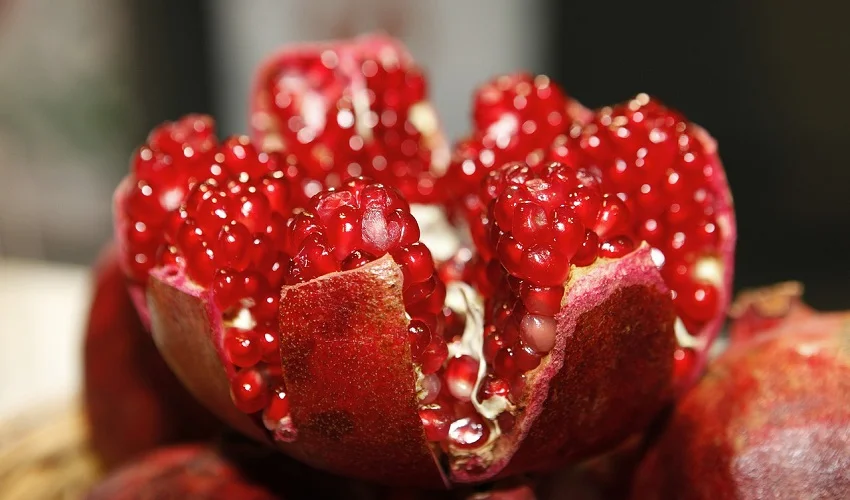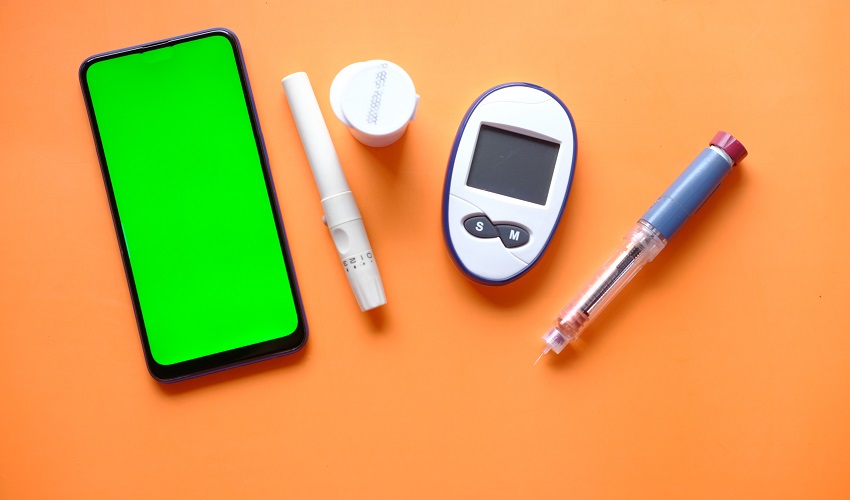What is diabetes?
Diabetes is a chronic condition characterized by high blood sugar levels. It occurs when the body does not produce enough insulin or when the cells in the body do not respond properly to insulin. Insulin is a hormone that helps regulate blood sugar levels and allows glucose to enter the cells to be used as energy. Without enough insulin or proper insulin function, glucose builds up in the bloodstream, leading to high blood sugar levels. Diabetes can have serious health complications if not properly managed, including heart disease, kidney damage, and nerve damage. It is important for individuals with diabetes to monitor their blood sugar levels, follow a balanced diet, engage in regular physical activity, and take any prescribed medications to keep their condition under control.
What is dosa?
Dosa is a popular South Indian dish that is made from fermented rice and lentil batter. It is a thin and crispy pancake-like food that is typically served with various chutneys and sambar, a lentil-based vegetable stew. Dosa is not only delicious but also a healthy option for people with diabetes. It has a low glycemic index, which means it does not cause a rapid increase in blood sugar levels. Additionally, the fermentation process involved in making dosa enhances its nutritional value by increasing the bioavailability of nutrients. Therefore, individuals with diabetes can enjoy dosa as a part of their balanced diet while keeping their blood sugar levels in check.
Can people with diabetes eat dosa?
Yes, people with diabetes can eat dosa. However, it is important to make some modifications to the traditional dosa recipe to make it more diabetes-friendly. Instead of using regular rice, it is recommended to use whole grain or brown rice to increase the fiber content. Additionally, the fermentation process of dosa batter helps in reducing the glycemic index, making it a better option for people with diabetes. It is also advisable to limit the quantity of dosa and pair it with a protein-rich side dish such as sambar or chutney to balance the carbohydrate intake. As with any food, portion control and moderation are key when including dosa in a diabetes-friendly diet.
Understanding Diabetes
Types of diabetes
There are several types of diabetes, including type 1 diabetes, type 2 diabetes, and gestational diabetes. Type 1 diabetes is an autoimmune disease where the body’s immune system mistakenly attacks and destroys the insulin-producing cells in the pancreas. Type 2 diabetes is the most common form of diabetes and is caused by a combination of genetic and lifestyle factors. Gestational diabetes occurs during pregnancy and usually resolves after giving birth. It is important for individuals with diabetes to manage their blood sugar levels through a balanced diet, regular exercise, and medication if necessary.
Causes of diabetes
Diabetes is a chronic condition that affects millions of people worldwide. There are several causes of diabetes, including genetic factors, lifestyle choices, and obesity. Genetic factors play a significant role in determining an individual’s risk of developing diabetes. Additionally, certain lifestyle choices such as a sedentary lifestyle, unhealthy diet, and lack of physical activity can increase the likelihood of developing diabetes. Obesity is also a major risk factor for diabetes, as excess body weight can impair insulin function and lead to insulin resistance. It is important to understand the causes of diabetes in order to effectively manage and prevent the condition.
Symptoms of diabetes
Diabetes is a chronic condition that affects millions of people worldwide. It is characterized by high blood sugar levels, which can lead to a variety of symptoms. Some common symptoms of diabetes include increased thirst, frequent urination, unexplained weight loss, fatigue, blurred vision, and slow healing of wounds. These symptoms can vary in severity and may develop gradually over time. It is important to recognize these symptoms and seek medical attention if you suspect you may have diabetes.
Nutritional Value of Dosa
Calories in dosa
Dosa is a popular South Indian dish that is enjoyed by many. When it comes to counting calories, dosa can be a healthy choice. The number of calories in a dosa can vary depending on its size and ingredients. Generally, a plain dosa made with rice and lentils contains around 100-150 calories. However, if you add toppings like butter or ghee, the calorie count can increase. It’s important to be mindful of portion sizes and the ingredients used while consuming dosa, especially for individuals with diabetes. By choosing healthier options and controlling portion sizes, dosa can be incorporated into a balanced diabetic diet.
Carbohydrates in dosa
Dosa is a popular South Indian dish made from fermented rice and lentil batter. It is a staple breakfast option for many people. However, for individuals with diabetes, it is important to be mindful of the carbohydrates present in dosa. Carbohydrates are the main source of energy in our diet, but they can also cause a rise in blood sugar levels. Therefore, it is recommended to consume dosa in moderation and pair it with protein-rich foods to help slow down the absorption of carbohydrates. Additionally, opting for whole grain dosa or adding vegetables to the batter can increase the fiber content, which can further help regulate blood sugar levels. It is always advisable to consult a healthcare professional or a registered dietitian for personalized dietary recommendations for diabetes management.
Protein and fat content in dosa
Dosa is a popular South Indian dish that is enjoyed by many, including those with diabetes. When it comes to managing diabetes, it is important to consider the protein and fat content in the foods we consume. Dosa is made from fermented rice and lentil batter, which provides a good amount of protein. However, it is also cooked with oil or ghee, which adds to the fat content. It is recommended to opt for healthier cooking oils or limit the amount of oil used while preparing dosa to keep the fat content in check. By being mindful of the protein and fat content in dosa, individuals with diabetes can enjoy this delicious dish while still maintaining a balanced diet.
Managing Diabetes with Dosa
Portion control
Portion control is an essential aspect of managing diabetes. When it comes to eating dosa, it is important to be mindful of the quantity consumed. Opting for a smaller portion size can help regulate blood sugar levels and prevent spikes. It is advisable to limit the number of dosas consumed in one sitting and pair them with a balanced mix of protein, fiber, and healthy fats. Additionally, incorporating plenty of vegetables and including a source of lean protein can further enhance the nutritional value of the meal. By practicing portion control and making smart food choices, individuals with diabetes can enjoy dosa as part of a healthy and balanced diet.
Choosing the right ingredients
Choosing the right ingredients is crucial when it comes to eating dosa in diabetes. Opting for whole grain flours like ragi or oats instead of refined flours can help regulate blood sugar levels. Additionally, using low-fat dairy products and lean sources of protein like chicken or tofu can further enhance the nutritional value of dosa. It is also important to include plenty of vegetables in the dosa batter to increase fiber content. By making these smart ingredient choices, individuals with diabetes can enjoy dosa as a part of their balanced diet.
Pairing dosa with healthy sides
Pairing dosa with healthy sides is a great way to make this traditional Indian dish even more nutritious. While dosa itself is low in calories and fat, adding healthy sides can enhance its nutritional value. Opt for options like sambar, a lentil-based vegetable stew, which is packed with protein and fiber. You can also pair dosa with coconut chutney, which is rich in healthy fats and adds a delicious flavor. Another healthy side option is tomato chutney, which is low in calories and high in antioxidants. By choosing these nutritious sides, you can enjoy dosa while also ensuring a balanced and wholesome meal.
Tips for Eating Dosa in Diabetes
Avoiding high glycemic toppings
When it comes to eating dosa in diabetes, it is important to be mindful of the toppings you choose. Avoiding high glycemic toppings is crucial in managing blood sugar levels. High glycemic toppings, such as sugar, honey, or sweetened fruits, can cause a rapid increase in blood sugar levels. Instead, opt for low glycemic toppings like fresh vegetables, lean proteins, and healthy fats. These toppings not only add flavor and texture to your dosa but also help in maintaining stable blood sugar levels. Remember to always check your blood sugar levels regularly and consult with a healthcare professional for personalized dietary advice.
Opting for whole grain dosa
Opting for whole grain dosa can be a smart choice for individuals with diabetes. Whole grain dosa is made from whole wheat or other whole grains, which are rich in fiber and have a lower glycemic index compared to regular dosa. This means that whole grain dosa can help regulate blood sugar levels and prevent sudden spikes in glucose. Additionally, whole grain dosa provides essential nutrients like vitamins, minerals, and antioxidants, which are beneficial for overall health. By choosing whole grain dosa, individuals with diabetes can enjoy a delicious and nutritious meal without worrying about compromising their blood sugar control.
Including fiber-rich foods
Including fiber-rich foods in your diet is essential, especially if you have diabetes. Fiber helps regulate blood sugar levels and improves digestion. When it comes to eating dosa, you can opt for whole wheat or multigrain dosa instead of the traditional rice dosa. These alternatives are packed with fiber and have a lower glycemic index, which means they have a slower impact on blood sugar levels. Additionally, you can also include vegetables like spinach, cabbage, or grated carrot in your dosa batter to increase the fiber content. Adding fiber-rich foods to your dosa not only makes it healthier but also helps you manage your diabetes better.
Balancing dosa in a diabetic diet
Balancing dosa in a diabetic diet can be challenging, but with the right approach, it is possible to enjoy this delicious South Indian dish without compromising your blood sugar levels. Firstly, opt for whole grain dosa made from a combination of rice and lentils, as this provides a good source of fiber and slows down the release of glucose into the bloodstream. Additionally, consider reducing the size of your dosa and pairing it with a protein-rich side dish, such as sambar or chutney, to help stabilize your blood sugar. It is also important to monitor your portion sizes and limit your intake of high-glycemic toppings like ghee or sugar. By making these adjustments and incorporating dosa into a well-balanced diabetic diet, you can still savor the flavors of this traditional dish while managing your diabetes effectively.
Consulting a healthcare professional
When it comes to managing diabetes, it is important to consult a healthcare professional for personalized advice. This is especially true when it comes to making dietary choices, such as eating dosa. A healthcare professional can provide guidance on portion sizes, ingredient substitutions, and overall meal planning to ensure that dosa can be enjoyed in a way that aligns with a diabetes management plan. They can also monitor blood sugar levels and make adjustments to medication if necessary. By consulting a healthcare professional, individuals with diabetes can make informed decisions about their diet and ensure that they are taking the necessary steps to maintain their health.
Enjoying dosa in moderation
Enjoying dosa in moderation is possible even for individuals with diabetes. Dosa, a popular South Indian dish made from fermented rice and lentil batter, can be a part of a balanced meal plan for people with diabetes when consumed in moderation. It is important to choose the right type of dosa, such as whole grain or multigrain dosa, which are higher in fiber and nutrients compared to regular dosa. Additionally, portion control is key when enjoying dosa. Instead of having a large serving, opt for a smaller portion and pair it with a side of protein and vegetables to balance the meal. By making these mindful choices, individuals with diabetes can still enjoy the flavors and textures of dosa while maintaining their blood sugar levels.




